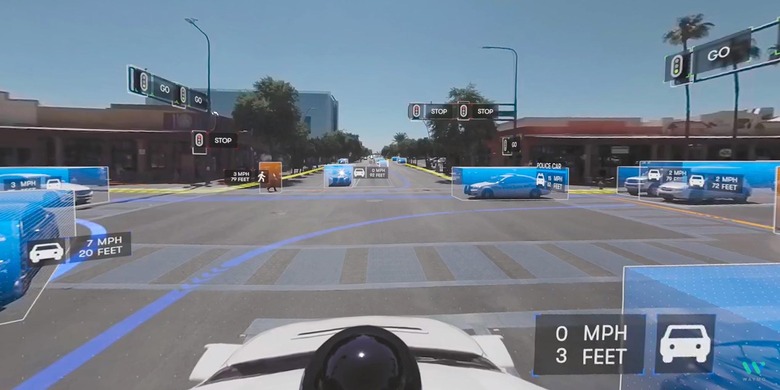You can ride a Waymo driverless car in this 360-degree video
Strap on your VR headsets and prepare to let Waymo take the wheel. Few of us will get to hitch a ride in Waymo's self-driving minivans – at least, not for some time yet – but you can get a taste of how it feels to be chauffeured by a robot with a new Waymo 360-degree experience.
You can view the video – which is several minutes from the start of a journey in one of the Waymo cars, through to its completion after it has navigated through traffic – on a smartphone or desktop, dragging the 360-degree footage around with your mouse or trackpad, or tilting your phone to see around you. What's more interesting, though, is using a virtual reality headset to watch it instead. That can be anything which supports YouTube's 360-degree format, including Google's own Cardboard and other headsets like Samsung's Gear VR.
It's fun, but it also has some serious meaning for Waymo. While the technological advancements around autonomous vehicles have been improving considerably since the Google self-driving car project began back in 2009, the hardware and software aren't the only issues projects like this must overcome. Arguably just as tricky – or perhaps even more so – are convincing the public, and regulators, that driverless cars are safe and worthy of a place on our roads.

Waymo has been doing outreach on that front for some time. Its autonomous Safety Report went into detail about the issues – generally the fault of other drivers – that its cars encountered, what they did when it happened, and what was learned (and improved) as a result. Meanwhile, videos like this will bring more transparency around what, exactly, the vehicle is seeing and responding too.
"Over the years," Meiling Tan, Head of Marketing at Waymo explains, "we've seen that one of the best ways to explain how our technology works is to show people an engineering tool called x-view, which displays what the self-driving car "sees" all around it." The car itself is one of the fleet Waymo currently has in operation in Phoenix, Arizona. Though the data shown in the video is actually a pared back example of what the car sees – including video from its cameras, and point data from the LIDAR laser scanner – it's enough to given an insight into how the whole system remains aware of everything going on around it.
Inside the car, meanwhile, there are LCD screens mounted on the back of the seats. Those also show the path of the vehicle, overlaid on a map. Waymo says that those internal monitors also give passengers a better sense of what's happening, and thus they tend to relax as a result.
